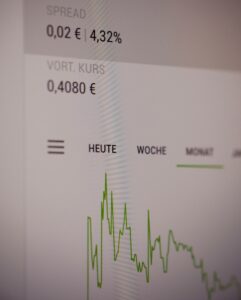The Critical Role of Privacy Impact Assessments in IoT Data Processing
Introduction to Privacy Impact Assessments in IoT Data Analytics
Implementing Privacy Impact Assessments in IoT Data Analytics is a vital practice in today’s data-driven world, especially in regions like Saudi Arabia and the UAE, where smart technologies are rapidly advancing. In cities such as Riyadh and Dubai, IoT devices generate vast amounts of data, driving innovation across various sectors. However, as the volume and complexity of data processing increase, so does the need to evaluate the impact of these processes on user privacy. Privacy Impact Assessments (PIAs) are systematic evaluations designed to identify and mitigate privacy risks associated with data processing activities, ensuring that organizations adhere to legal and ethical standards.
For business executives, mid-level managers, and entrepreneurs, understanding the importance of conducting PIAs in IoT data analytics is essential for safeguarding user privacy and maintaining trust. As IoT networks expand, integrating more devices and services, the potential for privacy infringements grows. PIAs provide a structured approach to assessing how data processing activities might impact individual privacy, allowing organizations to address potential issues before they become significant problems.
In the context of smart city initiatives in Riyadh and Dubai, where IoT plays a critical role in managing public infrastructure, transportation, and healthcare, PIAs are indispensable. This article explores how employing privacy impact assessments in IoT data analytics helps evaluate the effects of data processing on privacy and outlines the recommended methodologies for conducting these assessments effectively.
The Importance of Privacy Impact Assessments in IoT Data Analytics
Privacy Impact Assessments (PIAs) are essential tools for identifying and mitigating risks associated with data processing in IoT networks. As IoT devices collect, transmit, and analyze vast amounts of data, there is an inherent risk that this data could be misused or mishandled, leading to privacy violations. PIAs help organizations anticipate and address these risks by providing a thorough analysis of how data is collected, used, and shared. This proactive approach ensures that privacy considerations are integrated into the design and implementation of IoT systems from the outset.
In regions like Saudi Arabia and the UAE, where data protection regulations are becoming increasingly stringent, conducting PIAs is not just a best practice—it is a legal necessity. For instance, the UAE’s Data Protection Law mandates that organizations processing personal data conduct PIAs to assess the impact of their activities on privacy. In Riyadh’s healthcare sector, where IoT devices are used to monitor patients and manage medical records, PIAs help ensure that sensitive health data is protected and that data processing activities comply with both local and international privacy standards.
Moreover, PIAs contribute to building trust with consumers and the public by demonstrating an organization’s commitment to protecting privacy. In Dubai’s smart city projects, where IoT devices are integrated into public services such as transportation and energy management, conducting PIAs can reassure citizens that their data is being handled responsibly. This trust is crucial for the continued adoption and success of IoT technologies in these cities.
Methodologies for Conducting Effective Privacy Impact Assessments
Conducting effective Privacy Impact Assessments in IoT data analytics requires a structured and methodical approach. One widely recommended methodology is the five-step PIA process, which includes identifying the need for a PIA, describing the information flows, identifying privacy risks, evaluating privacy solutions, and signing off and recording the PIA outcomes. This structured approach ensures that all potential privacy risks are thoroughly considered and addressed.
The first step is to identify the need for a PIA. This involves determining whether a data processing activity poses significant privacy risks. For instance, in Saudi Arabia’s financial sector, where IoT devices are used for transaction monitoring and fraud detection, a PIA might be required to assess the privacy implications of processing financial data. Once the need for a PIA is established, the next step is to describe the information flows, mapping out how data is collected, processed, stored, and shared within the IoT network. This step is crucial for understanding the scope of the data processing activities and identifying potential points of vulnerability.
After mapping the information flows, the third step is to identify and evaluate privacy risks. This involves analyzing how the data processing activities could impact individual privacy, such as the risk of data breaches, unauthorized access, or misuse of data. In Dubai’s energy sector, where IoT devices monitor and manage energy consumption, identifying risks might involve assessing the potential for unauthorized access to energy usage data, which could reveal sensitive information about households or businesses. Once the risks are identified, the fourth step is to evaluate privacy solutions, such as implementing data encryption, access controls, and anonymization techniques to mitigate these risks.
Best Practices for Ensuring Privacy in IoT Data Analytics
To ensure privacy in IoT data analytics, organizations should adopt several best practices alongside conducting PIAs. One key practice is to implement data minimization principles, which involve collecting only the data that is necessary for the specific purpose and retaining it only for as long as needed. This reduces the risk of privacy violations by limiting the amount of data that could potentially be exposed. In Riyadh’s smart transportation systems, for example, data minimization might involve collecting only the necessary data for optimizing traffic flow without storing detailed personal travel histories.
Another best practice is to incorporate privacy by design into IoT systems. Privacy by design is the concept of embedding privacy considerations into the development process of technologies and systems. This means that privacy is not an afterthought but a fundamental part of the system’s architecture. In Dubai’s public safety initiatives, where IoT devices are used for surveillance and emergency response, incorporating privacy by design ensures that these systems are designed with robust privacy protections from the outset, such as using encrypted communication channels and secure storage solutions.
Finally, organizations should ensure transparency and accountability in their data processing activities. This involves clearly communicating to users how their data is being collected, used, and protected and providing mechanisms for users to control their data, such as consent management tools and opt-out options. In Saudi Arabia’s retail sector, where IoT devices are used for customer tracking and personalized marketing, ensuring transparency and offering users control over their data can help build trust and enhance customer relationships.
Conclusion: The Future of Privacy in IoT Data Analytics
The integration of Privacy Impact Assessments in IoT Data Analytics is essential for navigating the complex landscape of data privacy in today’s interconnected world. As IoT networks continue to expand and evolve, the need for robust privacy protections will only grow. By conducting thorough PIAs and adopting best practices such as data minimization, privacy by design, and transparency, organizations can ensure that their IoT data processing activities respect user privacy and comply with regulatory requirements.
In regions like Saudi Arabia and the UAE, where technological innovation is driving rapid growth, maintaining a strong focus on privacy is crucial for sustaining public trust and ensuring the long-term success of IoT initiatives. By proactively addressing privacy risks and implementing effective PIAs, businesses and governments can build resilient, privacy-conscious IoT ecosystems that support innovation while protecting individual rights.
—
#IoTDataAnalytics #PrivacyImpactAssessments #DataPrivacy #IoTSecurity #DataProcessing #PrivacyMethodologies #ModernTechnology #SaudiArabia #UAE #Riyadh #Dubai













